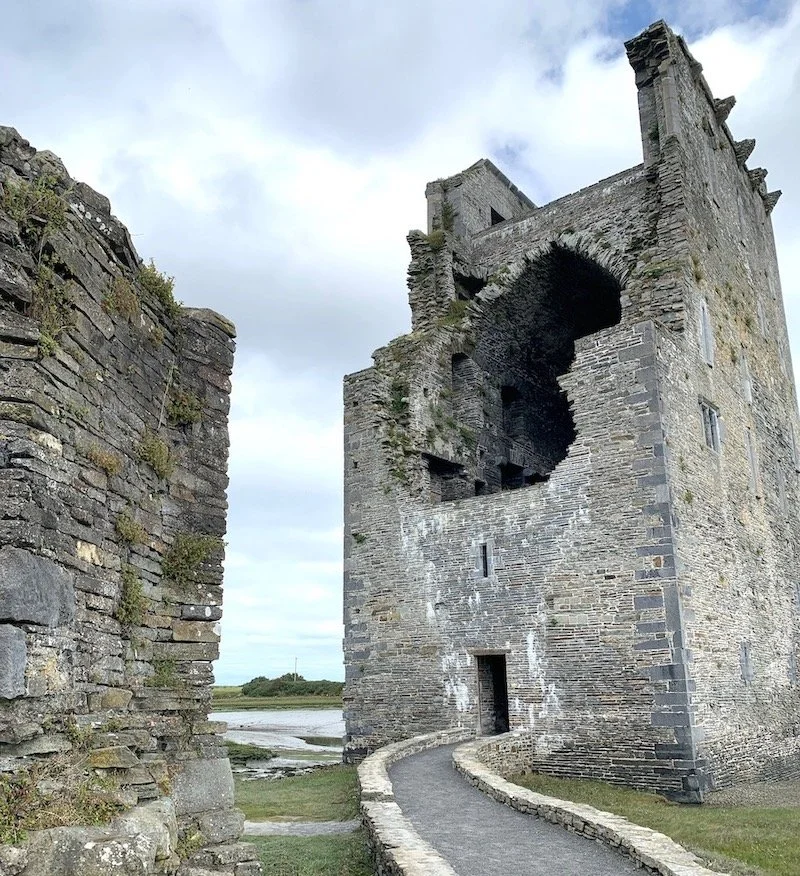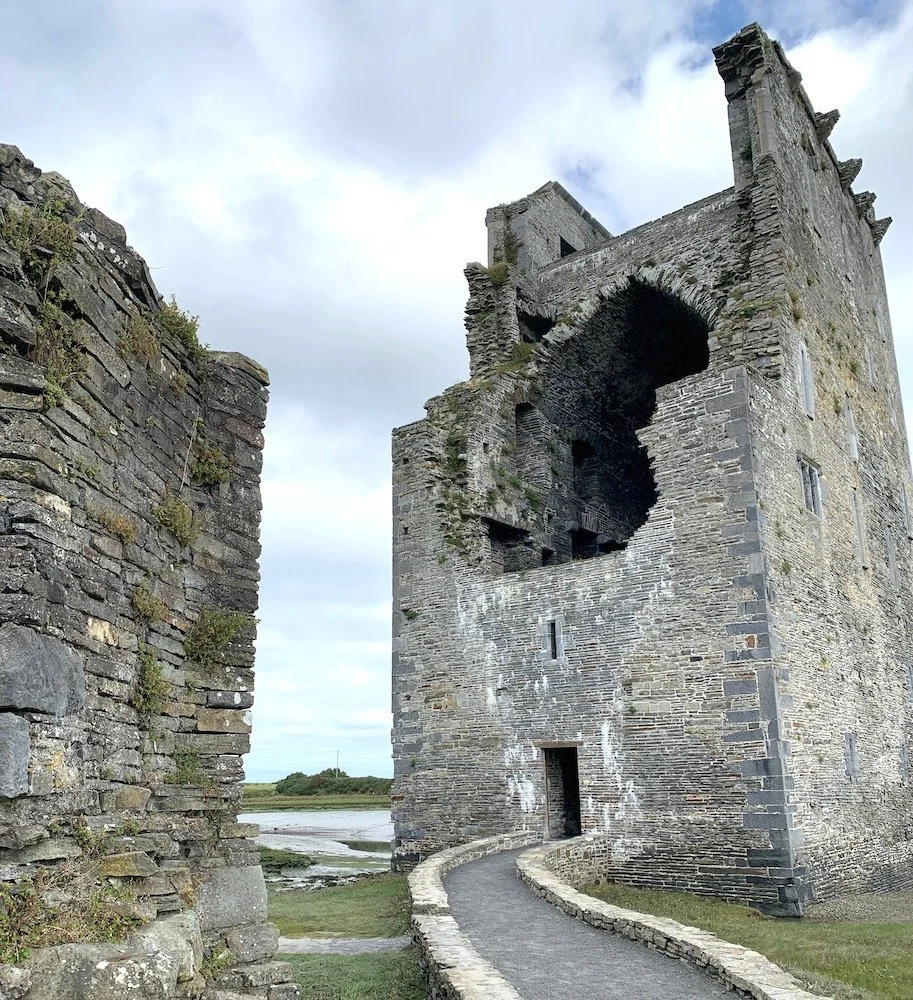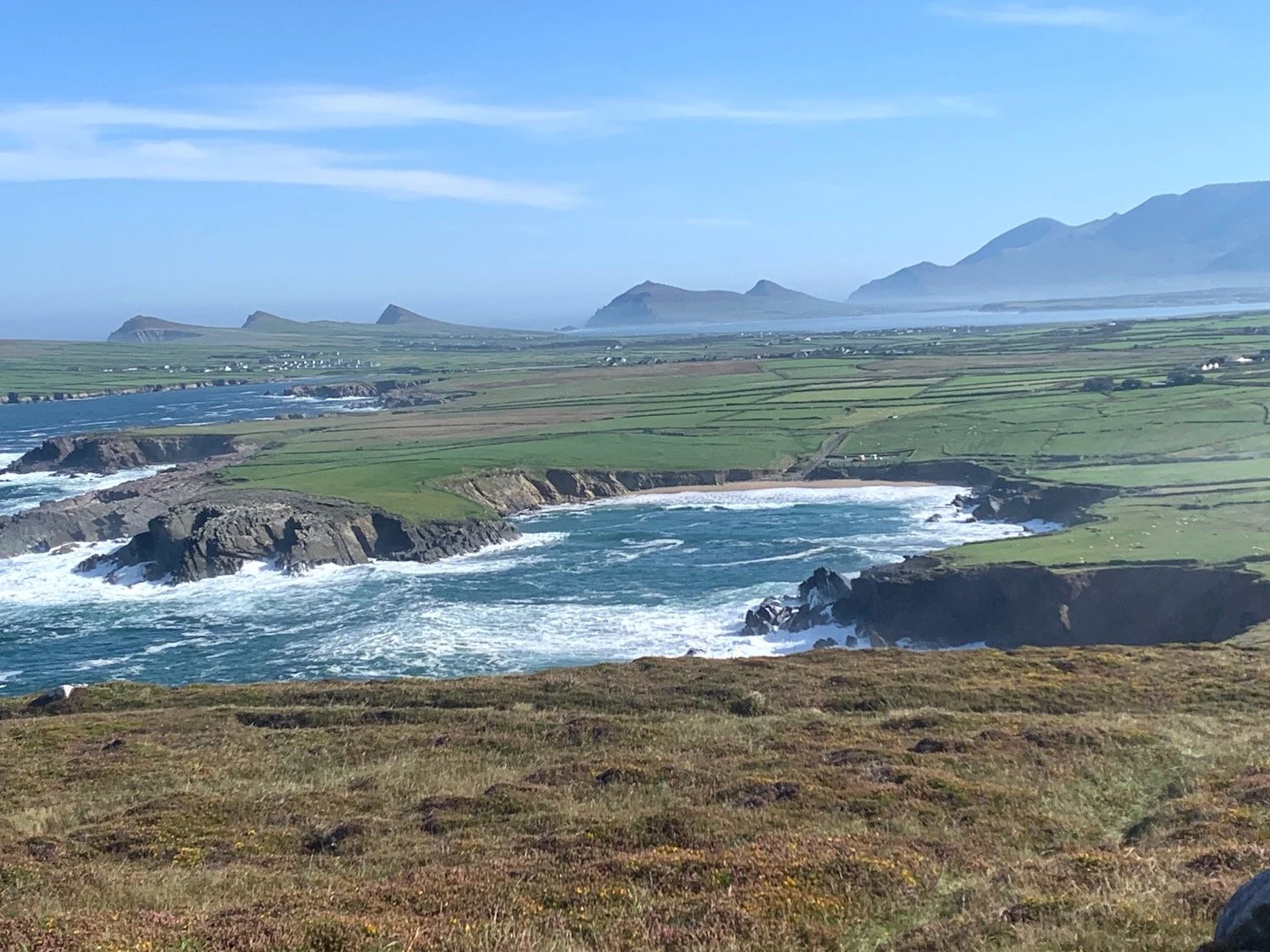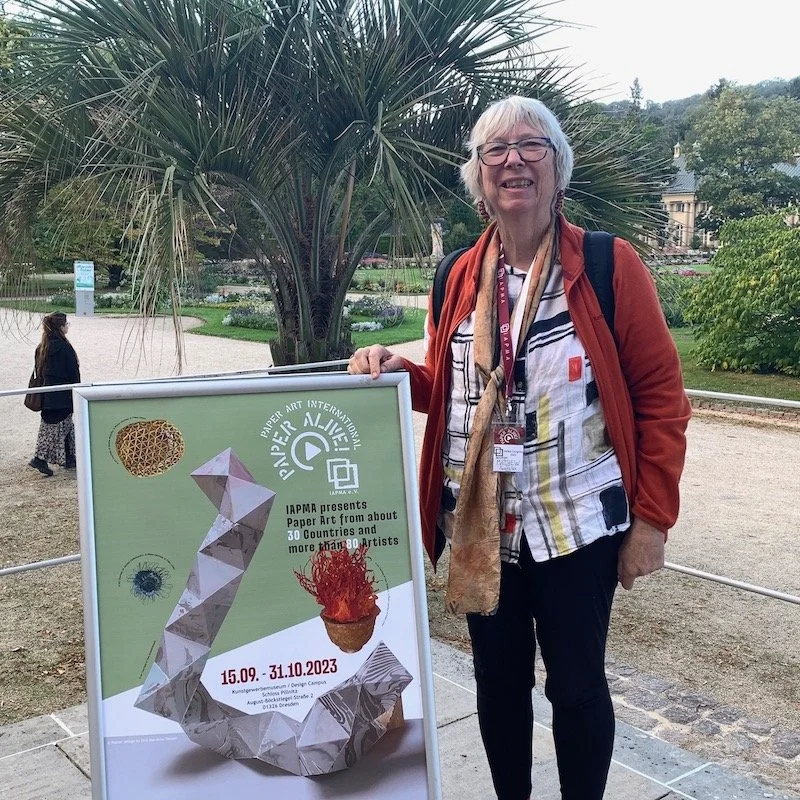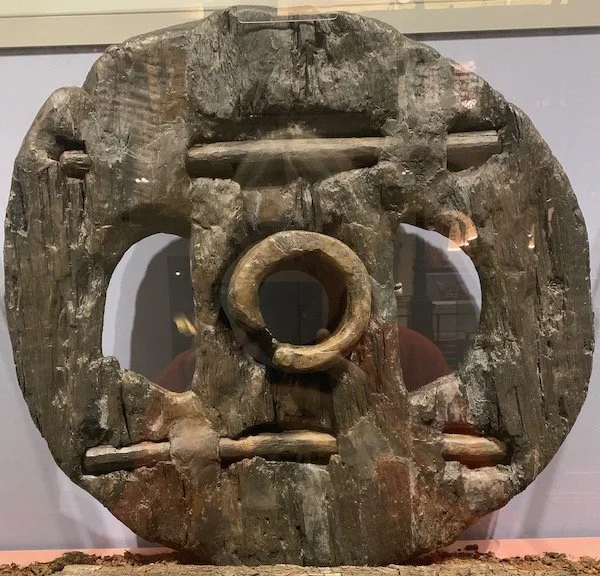Holes in History
Caisleán Charraig an Phoill (the Rock of the Hole). Carrigafoyle Castle, Ireland
Why travel? I ask myself this question every time I embark on a random journey of discovery. Travelling to new places means uncovering stories of lives led, battles fought and the holes that become evident in the histories I learnt at school.
Travelling through Ireland, I found myself drawn to ruins of castles and stone towers that are relics of ancient skyscrapers five stories high. Their empty windows are like sightless eyes staring out over the landscape. They call to me, ghosts of conquests and resilience.
Hiring a car in Ireland meant a slow meander through the rural countryside finding places such as Carrigafoyle Castle on the Shannon River estuary. This ‘ rock of the hole’ castle in County Kerry, is remarkable for the huge hole in its wall, while the rest of the castle can still be explored via a winding stone staircase opening onto a series of small rooms.
This castle’s story became a history lesson of the Irish resistance. In 1580, the rebel Earl of Desmond fortified this castle with a garrison of Irish and Spanish soldiers, fending off English troops led by the Lord Justice of Ireland, Sir William Pelham.
For three days they were besieged until a canon ball smashed into the west wall, crushing those underneath. The garrison were executed and the Earl’s valuables were sent to Queen Elizabeth I.
I look at that wall and think of battles fought and lost. It also led me to research why there seemed to be so many references to Spanish soldiers on the west coast of Ireland.
It transpired that the Irish rebels sought support from King Philip II of Spain in their fight against the English. At that time Spain was a major maritime power and a stronghold of Catholic Europe. When Queen Elizabeth I executed Mary Queen of Scots, Spain’s Catholic ally, King Philip II made his move.
In 1588 Philip launched the Spanish Armada to invade England. My school history lessons stopped at how Sir Francis Drake set alight ‘fire ships’ amongst the Armada throwing it into disarray and winning the battle.
What I learnt in Ireland is that more than 20 ships from the retreating Armada were blown off course and shipwrecked off the wild Atlantic coast of western Ireland. Any Spanish survivors were rounded up and executed by the English administration.
History is contentious. Learning about these battles as a child, the English were always cast as heroes. Sir Francis Drake was depicted as a dashing sailor. Turns out he was a slaver and pirate. There are great holes in my knowledge of the world that I try to rectify when I travel to places and read their sides of the story.
In Sligo we stayed one street away from the infamous Sligo jail where Michael Collins, Irish patriot and revolutionary figure in the fight for the Irish republic was once incarcerated. He is considered a hero in the fight to establish the Irish republic, but his role in the IRA makes him a contentious figure.
Every place holds its stories, good and bad, some we know but others are lost in time. These relics of stone castles remind us of the places where people lived their lives and fought for their beliefs. The holes in their walls still bear witness to these events.
The wild Atlantic sea in Ireland, where some of the soldiers from the Spanish Armada landed.

